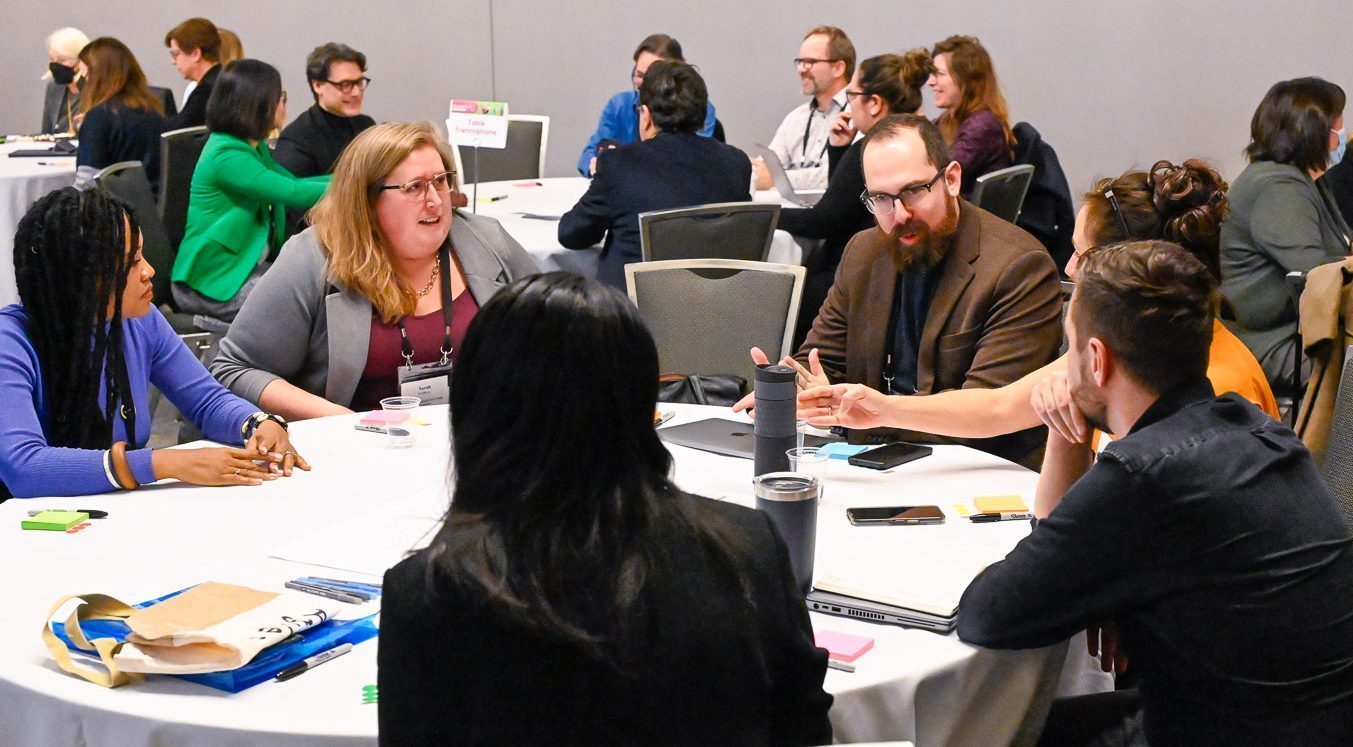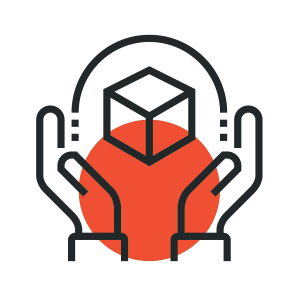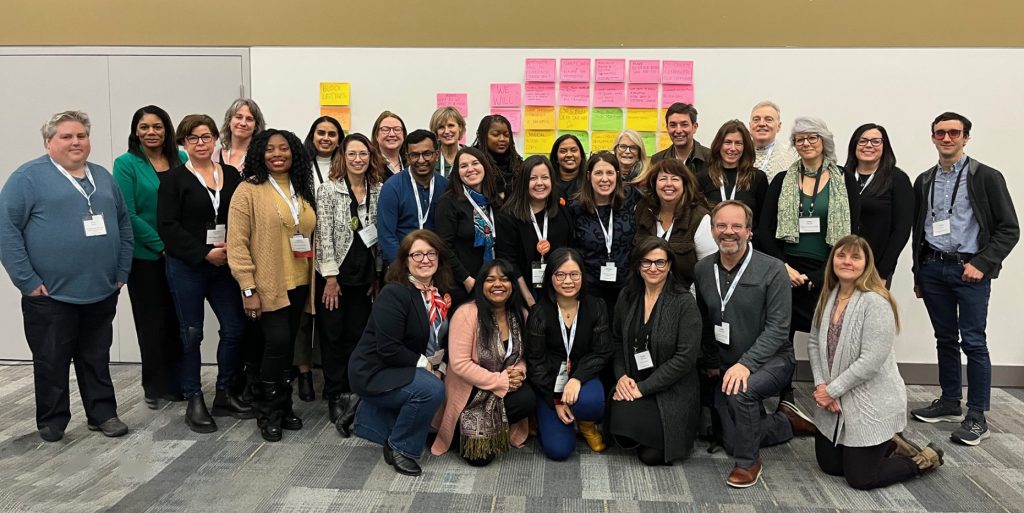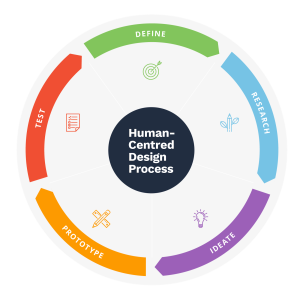A National Advocacy Campaign for Career Development in Canada

Career development can have a tremendous positive impact on individuals, employers and the economy. Unfortunately, it is an underused resource in Canada, with career education varying widely across the country, few adults accessing career services and low numbers of employers providing employee career development programs.
To help unlock the transformative potential of career development, a group of interestholders representing a diverse cross-section of the field across Canada – with the support of CERIC and Overlap Associates – is working to develop a National Advocacy Campaign that aims to:
- Promote career development as a priority for the public good
- Build career development knowledge, mindsets and competencies
Why create a National Advocacy Campaign? The purpose of a National Advocacy Campaign is to increase the visibility, profile and impact of career development in order to improve the working lives of everyone in Canada and build a more prosperous economy and equitable society.
Timeline of work
GET INVOLVED!
As the purpose of the National Advocacy Campaign is to increase the visibility, profile and impact of career development, we believe it is important for this initiative to involve, reflect and be embraced by Canada’s career development community. We will be seeking input from the community at various stages throughout this process. Have questions? Reach out to CERIC’S Senior Director, Marketing and Communications, Sharon Ferriss, at sharon@ceric.ca.
Campaign prototypes
Initial community consultations, drawing on high-level potential Opportunity Areas for a campaign, led to the development of seven campaign prototypes for a potential future National Advocacy Campaign. In October 2023, the Steering Committee selected the “Beyond Decent” campaign idea to further research and ideate. These ideas will continue to evolve through further testing, consultation and ideation, and new ideas might emerge.
 OPPORTUNITY AREA: Better funding and provision of universally accessible career guidance and education in the K-12 system with government and/or school boards.
OPPORTUNITY AREA: Better funding and provision of universally accessible career guidance and education in the K-12 system with government and/or school boards.
AUDIENCE: K-12
DESCRIPTION: Let’s approach and redefine careers as a never-ending journey. Each individual has a variety of needs at many different points along their journey. There are infinite ways to integrate supports throughout an individual’s journey to provide flexible and appropriate support that addresses the unique needs regardless of the stage an individual may be at in a traditional career development path. By rebranding the idea of career to journey, universally accessible guidance and education become something to be integrated through the lifespan of an individual to help them continuously thrive as they grow on their own.
 OPPORTUNITY AREA: Better funding and provision of universally accessible career guidance and education in the K-12 system with government and/or school boards.
OPPORTUNITY AREA: Better funding and provision of universally accessible career guidance and education in the K-12 system with government and/or school boards.
TAGLINE: Life and work is a journey, not a destination. Hop on and explore the landscape of possibilities. See the opportunities and increase your flexibility.
AUDIENCE: K-12 students, educators, employers, parents, labour market specialists – all will be affected!
DESCRIPTION: There is tension in the career development community around the use of the term career – it is seen as intimidating and exclusive, especially to those at the start of their careers. Addressing this tension through low-pressure early interventions at school and engaging with students across their academic life in encouraging ways, we can shift the narrative and stigma around the term career. With the support and collaboration of community partners, educators and families, students will have an opportunity for self-discovery and access to resources and career development advice along their academic, life and work journey.
 OPPORTUNITY AREA: The right to decent work on the part of peoples in Canada with government policymakers and employers.
OPPORTUNITY AREA: The right to decent work on the part of peoples in Canada with government policymakers and employers.
TAGLINE: Let’s get beyond decent with career development
AUDIENCE: Employers
DESCRIPTION: From local, transnational, to international organizations, there is plenty of incredibly important work happening to advocate for and implement decent working conditions. As career development professionals it is our role to advocate for the existence of appropriate working conditions in every workplace. But why are we striving for just decent? To take it one step further our goal is to get beyond decent by making decent work the bare minimum. Decreasing turnover, reduction in stress-related illnesses, and less social assistance costs are just a few of the pragmatic results we can start to see when we get beyond decent.
 OPPORTUNITY AREA: Better funding and provision of universally accessible career guidance and education in the K-12 system with government and/or school boards.
OPPORTUNITY AREA: Better funding and provision of universally accessible career guidance and education in the K-12 system with government and/or school boards.
TAGLINE: Careers is just carers with an extra e
AUDIENCE: Career Influencers
DESCRIPTION: To have a direct impact on children and youth, we need to support career influencers through career development conversations – parents and guardians are more often than not one of the largest influences on a young person’s chosen career path. So how might we equip career influencers with the necessary tools to have an educated impact? First, we need them to become aware of just how off-base their advice can be. To do this, we have created a chatbot – users can enter in their best career advice, and our AI will let them know as a percentage just how “wrong” they really are and provide them a link to contact CERIC for support. It is our goal that this fun way of providing career influencers a reality check on their advice will help CERIC and career development professionals build awareness around the importance of career development professionals.
 OPPORTUNITY AREA: The right to decent work on the part of peoples in Canada with government policymakers and employers.
OPPORTUNITY AREA: The right to decent work on the part of peoples in Canada with government policymakers and employers.
TAGLINE: Path to prosperity needs navigation – you don’t have to do it on your own
AUDIENCE: Policy makers / funders
DESCRIPTION: Decent workplaces have the ability to become pipelines for top talent. By advocating for decent work, we aim to take the opportunity to align with the Sustainable Development Goals to provide employees with decent, rewarding work, and provide employers with opportunities for top talent to find work they resonate with. This might look like a persona-based message, showcasing decent work and workplaces through the lens of top talent.
 OPPORTUNITY AREA: Better funding and provision of universally accessible career guidance and education in the K-12 system with government and/or school boards.
OPPORTUNITY AREA: Better funding and provision of universally accessible career guidance and education in the K-12 system with government and/or school boards.
TAGLINE: Explore a life aesthetic that suits you
AUDIENCE: Children and youth
DESCRIPTION: To provide equitable opportunity to career development education, we need to look beyond the school system. Life Aesthetic is a career development kit, intended to get youth thinking differently about their careers in a new and innovative way. This kit can be implemented in the classroom by teachers, at performances or conferences by motivational speakers, or even in local communities by community leaders. The Life Aesthetic toolkit is intended to spark a movement and provide youth with a way of feeling connected to themselves and something bigger.
 OPPORTUNITY AREA: Engaging with a career development professional to Canadians broadly throughout various ages and stages of life.
OPPORTUNITY AREA: Engaging with a career development professional to Canadians broadly throughout various ages and stages of life.
TAGLINE: Connecting you to your local career development specialists
AUDIENCE: Employees and Employers
DESCRIPTION: Individuals at any point in their career may develop the need for a variety of resources that they may or may not know are available. Career Web is a one-stop-shop digital marketplace app for locating the career development resources you need by simply filling out what questions or concerns you may have. This tool can help connect both employees and employers to career development specialists in the local community.
The team

The project to develop a National Advocacy Campaign is guided by a volunteer Steering Committee and advanced by a Working Group, which is also engaging members of the broader career development community.
While the development of the campaign is community-led, CERIC served as an initiator, organizer and convener for initial consultations and to establish the Steering Committee and Working Group. CERIC participates in Steering Committee and Working Group meetings and provides ongoing communications support for the groups.
Working Group Members
Steering Committee Members
- Trevor Buttrum, Canadian Association of Career Educators and Employers (CACEE)
- Joanna Goode, Canadian Association for Supported Employment (CASE)
- Sareena Hopkins, Canadian Career Development Foundation (CCDF)
- Adriano Magnifico, Louis Riel School Division
- Sarah Mitchell, Congress of Aboriginal Peoples
- Janet Morris-Reade, ASPECT BC
- Kim Patel, The Neighourbood Group
- Lisa Taylor, Challenge Factory
- Akosua Alagaratnam, First Work
- Donnalee Bell, CCDF
- Kay Castelle, CERIC
- Jeannette Campbell, Ontario Disability Employment Network (ODEN)
- Candy Ho, University of the Fraser Valley, Kwantlen Polytechnic University
- Annie Kidder, People for Education
- Janet Morris-Reade, ASPECT BC
- Surranna Sandy, Skills for Change
- Janet Uchacz-Hart, Saskatoon Industry Education Council (SIEC)
- Deanna Villella, John Howard Society
- Sue Watts, Employment and Education Centre
What is human-centred design?
CERIC has engaged to help integrate human-centred design into the process of developing a National Advocacy Campaign. Human-centred design (HCD), popularly known as “design thinking,” is an iterative, collaborative approach to problem-solving. Most importantly, human-centred design keeps stakeholders at the heart of the process.

Human-centred design is:
- Human-Centred – Co-creating solutions that are desirable, feasible and viable with those who will be affected. Problems are defined and described by the people who deal with them.
- Iterative & Incremental – Involving the five stages of the Design Cycle: Define, Research, Ideate, Prototype and Test. We don’t move through these phases in order, but rather move between them iteratively as new solutions and insights emerge.
- Collaborative – Working with others to structure decision making and understand where to go next.
- Evidence-Based – Constantly seeking feedback and integrating it into the process.
For more information on human-centred design, check out this article from Overlap Associates on “Examples of Human-Centred Design in Practice.”
